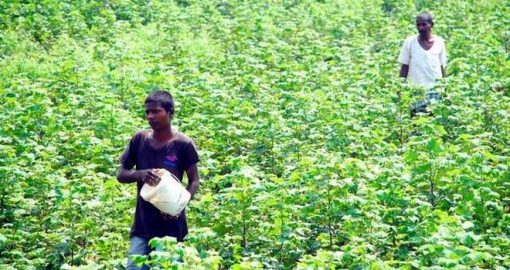Telangana ranked second in the list of farmers’ suicides in the country with nearly 4,000 farmers giving up their lives due to agrarian distress in the last four years

On March 1, 2014, the then President Pranab Mukherjee gave his assent to the Andhra Pradesh Reorganisation Act, 2014, clearing all constitutional obligations for the formation of Telangana state. K. Chandrasekhar Rao’s Telangana Rashtra Samithi (TRS) party, which was on the forefront for the separate statehood movement, came to power in the newly formed state, winning the people’s mandate – with its key promise to transform the state into a prosperous one which it termed as ‘Bangaru Telangana’ meaning “Golden Telangana”. However, a glance at the government’s policies as per the crucial agricultural sector in the state reveals chilling facts on how actually the TRS regime has functioned in the last four years.
Telangana – Hotspot of Farmers’ Suicides
Telangana ranked second in the list of farmers’ suicides in the country with nearly 4000 farmers giving up their lives due to agrarian distress in the last four years. According to the Union Ministry of Agriculture and Farmers Welfare (MoA&FW), the highest farmers’ suicides are in Warangal district with one-third share of the state followed by Nalgonda and Karimnagar districts, though the other districts too are not free from the menace. As per a survey by MoA&FW, the maximum incidence of suicide occurs from September to December across Telangana.
Despite such disillusionment in farming, the state government “did not sanction compensation amount to the victims’ families by adhering to pro rata (in proportion) of the suicides of the district in question, but approved it routinely,” a recent report on the agricultural situation in India concluded. This suggests the obvious lacklustre attitude towards the grave problem in the state. Indebtedness, failure of crops and lack of access to irrigation are among the causes of suicides in Telangana, various independent studies have found.
According to the Agriculture Census 2015-16, there are about 59.4 lakh farmers including 7 lakh farmers from Scheduled Caste communities and 7.12 lakh from Scheduled Tribe communities.
Former Chief Minister K. Chandrasekhar Rao had launched the ‘Mission Kakatiya’ project in 2014, promising that the project would be a boom to the farming sector. Mission Kakatiya was aimed at restoring the minor irrigation tanks, so that 255 TMC (thousand million cubic) of water, allocated for minor irrigation sector under Godavari and Krishna river basins, would be effectively utilised. A CAG (Comptroller and Auditor General of India) report had found out numerous flaws in the implementation of the project. It was found that the government’s planning turned out to be “unrealistic”. For instance, while the project’s phase-one target was to restore 9,306 tanks to be finished by the end of 2014, it got finished in May 2017. This further delayed the next phases of the project. While the government claimed to restore 46,531 tanks in 5 years, in a phased manner, only 28 per cent of the total target has been achieved in reality. As per official data, the state government had spent up to Rs. 3231.2 crore in three years.
Now consider this- the TRS government announced to launch Interest-free Loans to Farmers (Vaddileni Runalu) and Crop Insurance in its 2017-18 budget. An amount of Rs. 265.39 crore was allocated for this purpose. While the government claimed that its objective was to mitigate the financial burden and provide relief to the farmers by allowing interest-free loans and institutional credit with a target to benefit 12 lakh farmers, it turned out that the scheme did not even take shape due to bureaucratic lapses and not a single penny was spent, despite much fanfare and advertisements from the government’s side.
Highest Distress Among Tenant Farmers
The state has witnessed numerous protests from farmers, especially tenant farmers, perhaps for two obvious reasons, incidence of suicides and government’s apathy.
As per a recent study conducted by Rythu Swarajya Vedika (RSV), more than 75 per cent of the farmers who committed suicide in Telangana during the last four years were tenant farmers and landless agricultural labourers.
Months before dissolving the state assembly, the TRS government had begun two schemes exclusively for farmers. The schemes are Rythu Bandhu scheme – under which the state government started providing investment support of Rs. 4,000 per acre, per season, for every farmer and Rythu Bandhu Bheema Scheme – the insurance scheme, under which the government will pay Rs. 2,271 per farmer (only to those farmers who are eligible as defined by the government) per year to Life Insurance Corporation (LIC) and in case of the insured farmer’s death, the person’s nominee will be paid Rs. 5,00,000.
While these two schemes were intended to provide investment support and insurance coverage to the farmers, not all farmers were covered, with tenant farmers, farmers cultivating endowment lands, and tribal farmers cultivating on forest lands without land titles, excluded from the schemes. Thus, even the two schemes announced months before the elections appear to serve only the rich and dominant farming class.
Courtesy: Indian Cultural Forum
